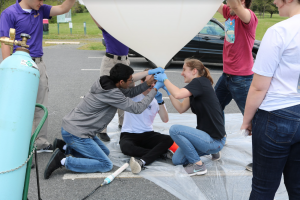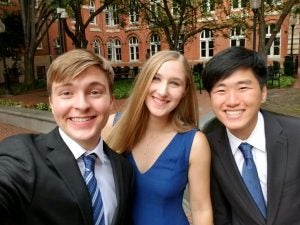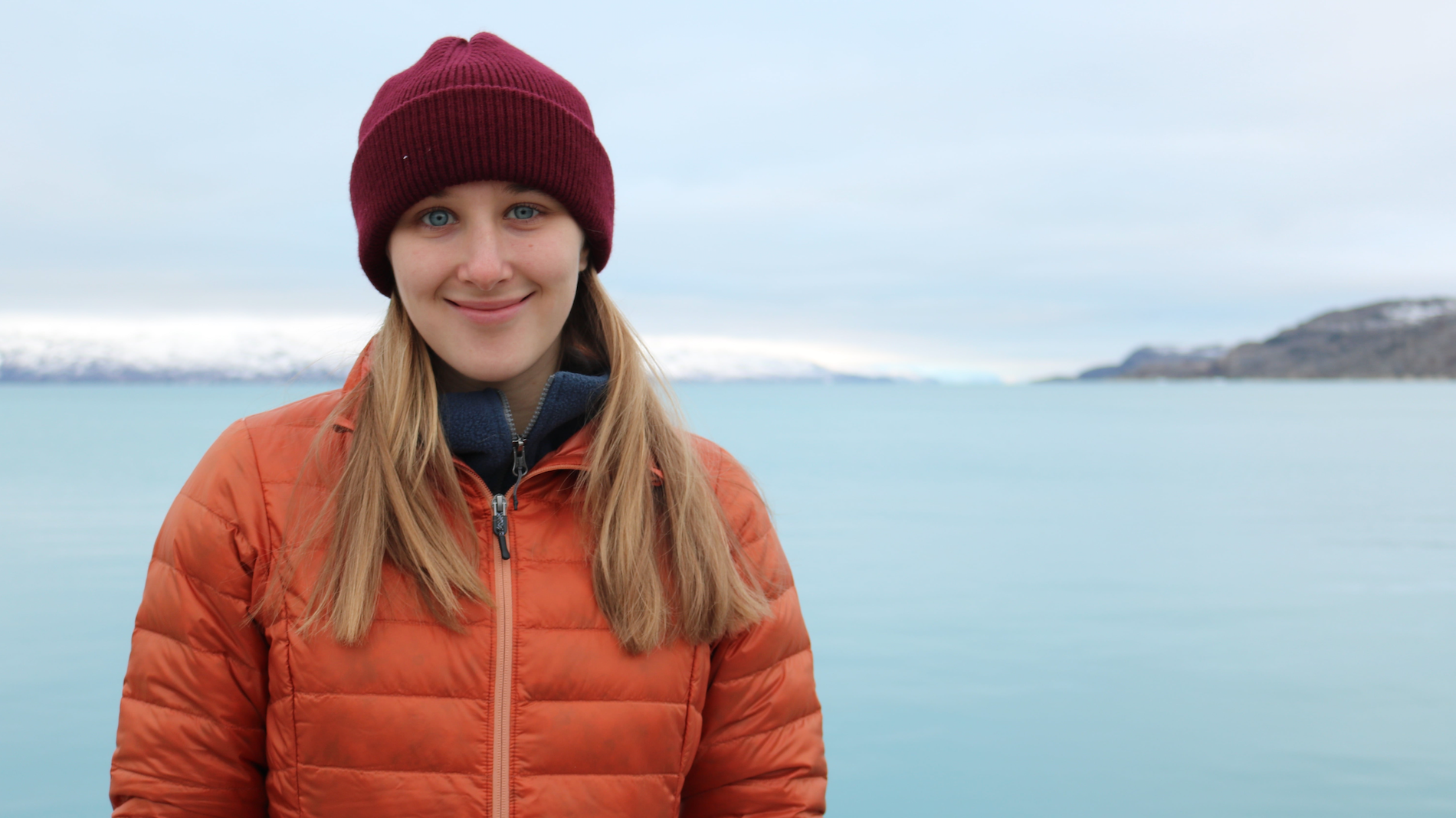Mission to Mars: Senior Working for NASA on Mission Mapping Where Humans Could Access Ice on Red Planet
Laura Ratliff (C’21) is currently working as an intern for the Mars Exploration Program at NASA HQ, where she is assisting in the development of the international Mars Ice Mapper mission that will launch in 2026. The internship, which is through the DC Space Grant Consortium, allows the senior to conduct research and write articles enabling future human exploration of the red planet.
A biology major and STIA minor, Ratliff has had a passion for science since she was young.
“Both of my parents work for NASA, so I grew up with an appreciation for space and space science, but I never saw myself as contributing to it until I came to Georgetown,” she explains. “I came into the university as a biochemistry major because of a research project I had worked on at Caltech in high school, but after meeting with Sarah Johnson, I realized that astrobiology and policy were hugely important fields that I wanted to become involved in.”
Alongside her passion for science, Ratliff says that she has been intrigued by policy since she took a class on constitutional law in the twelfth grade. Her experiences with Johnson, principal investigator of the Johnson Biosignatures Lab at Georgetown, made her realize that there was an opportunity to merge her areas of interest through a career in space policy with a focus in astrobiology.
Mentorship and Mars Missions

Ratliff working on the high altitude balloon for the Georgetown University Technology and Engineering Club
During her first year at Georgetown, Ratliff reached out to Johnson, who was able to provide guidance on internships and research opportunities. By her junior year, Ratliff joined the Johnson Biosignatures Lab, where she has been seeking links between the building blocks of microbes and their environment.
“Laura has been such a delight to have in the lab,” Johnson says. “Her passion for space exploration runs deep, as does her interest in the limits of life here on Earth. She is brilliant and tenacious, unafraid to take on daunting things.”
As a visiting scientist with the Planetary Environments Lab at NASA’s Goddard Space Flight Center, Johnson connected Ratliff with her colleagues in the lab this past summer characterizing life in environments on Earth that could be analogs for other places in the solar system. Ratliff says that though she was originally going to focus on lab work to support her senior thesis, this opportunity had greater long-term benefits.
“Working virtually at Goddard was probably the most useful thing I could have done with my summer because I was introduced to the whole field of astrobiology in a much more comprehensive way than had I proceeded with my thesis,” Ratliff says. “Sarah has been really good at guiding me towards opportunities that will broaden my mind and she’s also helped me find both the science policy and lab work that I wanted in my undergraduate experience.
In addition to these opportunities, Ratliff also pursued an internship with the Mars Exploration Program. Georgetown is part of the DC Space Grant Consortium, of which this program is a subset. Department of Physics professor Edward Van Keuren serves as the university’s contact and principal investigator.
The senior was selected for the internship along with one other student. In her role, Ratliff is helping to lay the foundation for a mission to send humans to Mars.
More on Mapping Mars

A photo of the Moon’s surface taken by Ratliff through the telescope in the Heyden Observatory.
The preliminary research conducted by the Mars Exploration Program is crucial for human spaceflight to the red planet, as the explorers will be gone for several years at a time. This means that not only will NASA need a thorough science plan in order to optimize the time spent on Mars, but they will also have to consider more basic needs such as where to obtain water.
Ratliff has been contributing to this research in addition to the international Mars Ice Mapper mission, which aims to send a synthetic aperture radar to scan for ice that would be accessible for human extraction. This work ties into greater Mars exploration as this knowledge will inform where NASA can send humans.
“Indicators of near-surface ice on the planet will enable humans to visit and collect ice cores, which is currently one of the main objectives of sending humans to Mars,” Ratliff explains. “Ice cores are mainly used to look at the historical record of a planet, in the same way that you can examine the rings of a tree. This mission is helping us try to find that sweet spot where there is ice that is scientifically interesting and also easily accessible.”
Extracurriculars on Campus
This summer, Ratliff will be using a NASA fellowship through the DC Space Grant Consortium to fund her research in the Johnson Lab on hypersaline environments in order to contribute to the greater field of astrobiology.
Alongside her work in Johnson’s lab and for NASA, Ratliff serves as a co-president for the Georgetown University Astronomical Society, where she has been working to preserve the on-campus observatory.
Ratliff is also a member of the Georgetown University Technology and Engineering Club, where she has led the design of a high-altitude balloon that will sample microbes in the stratosphere, with a planned launch in the next academic year.

Ratliff takes a selfie after a Chamber Singers performance
Outside of her many scientific contributions to the university, Ratliff sings in the Georgetown University Chamber Singers, a Baroque and Renaissance choral group. She says that this organization has given her the strongest sense of community on and off campus. She also performed with the Tappin’ Jacks, Georgetown’s tap dance club, although it has been suspended until students are back on campus.
Her experiences at Georgetown and working for NASA have encouraged Ratliff to pursue a master’s focused on international space policy from George Washington University later this year. She hopes that she will be able to pursue a career as a bridge between space scientists, policymakers and the greater community.
-by Shelby Roller (G’19)
